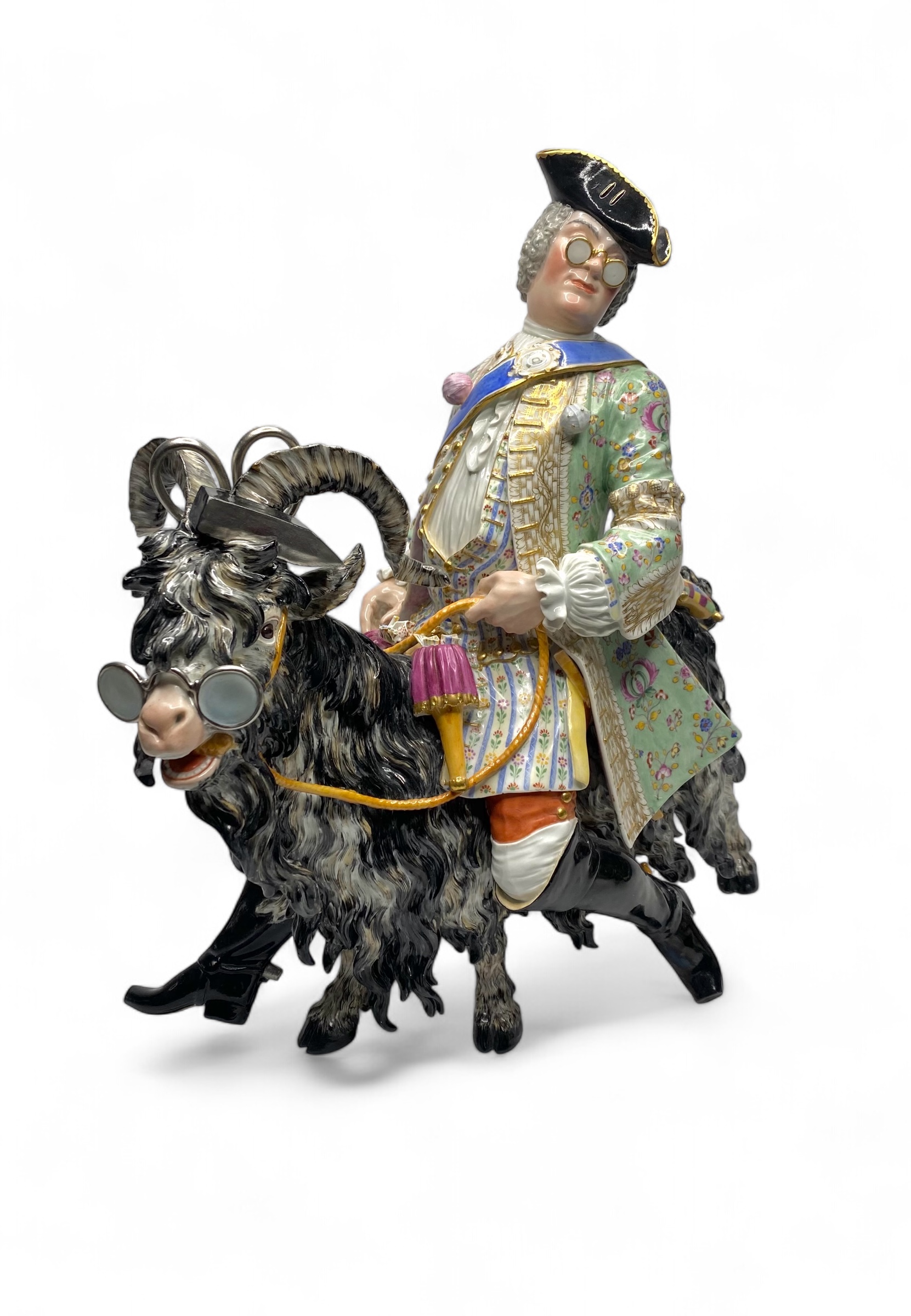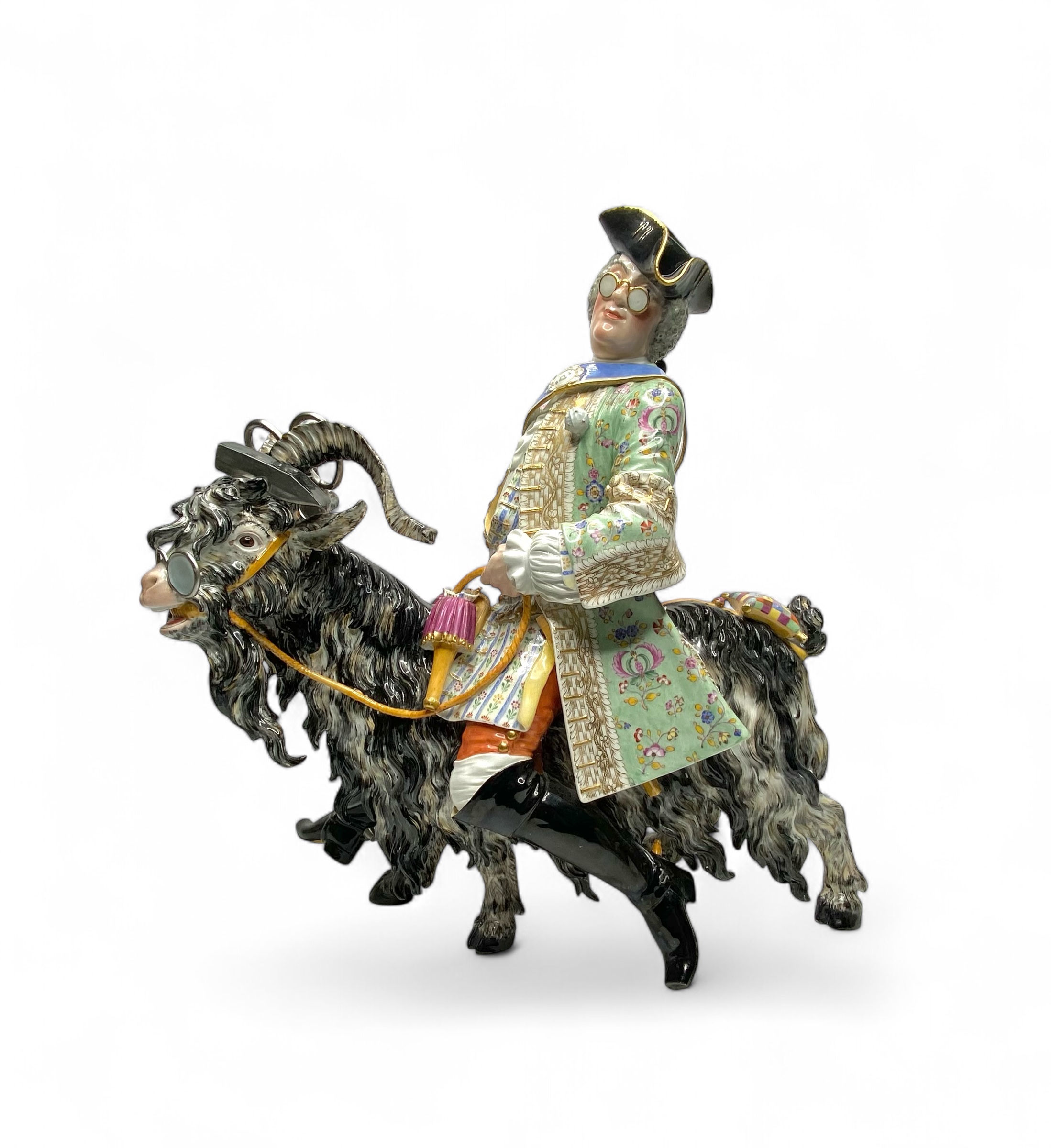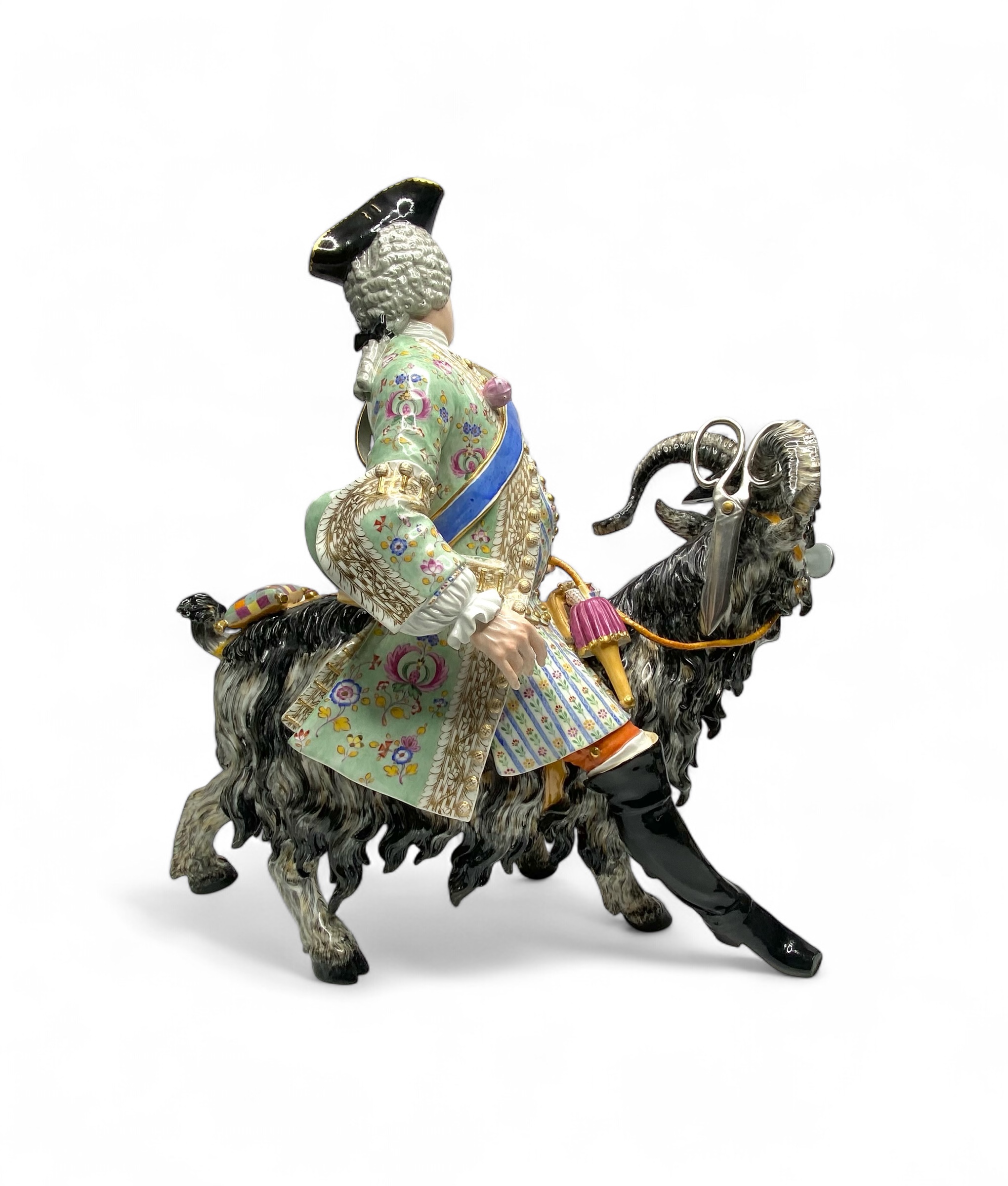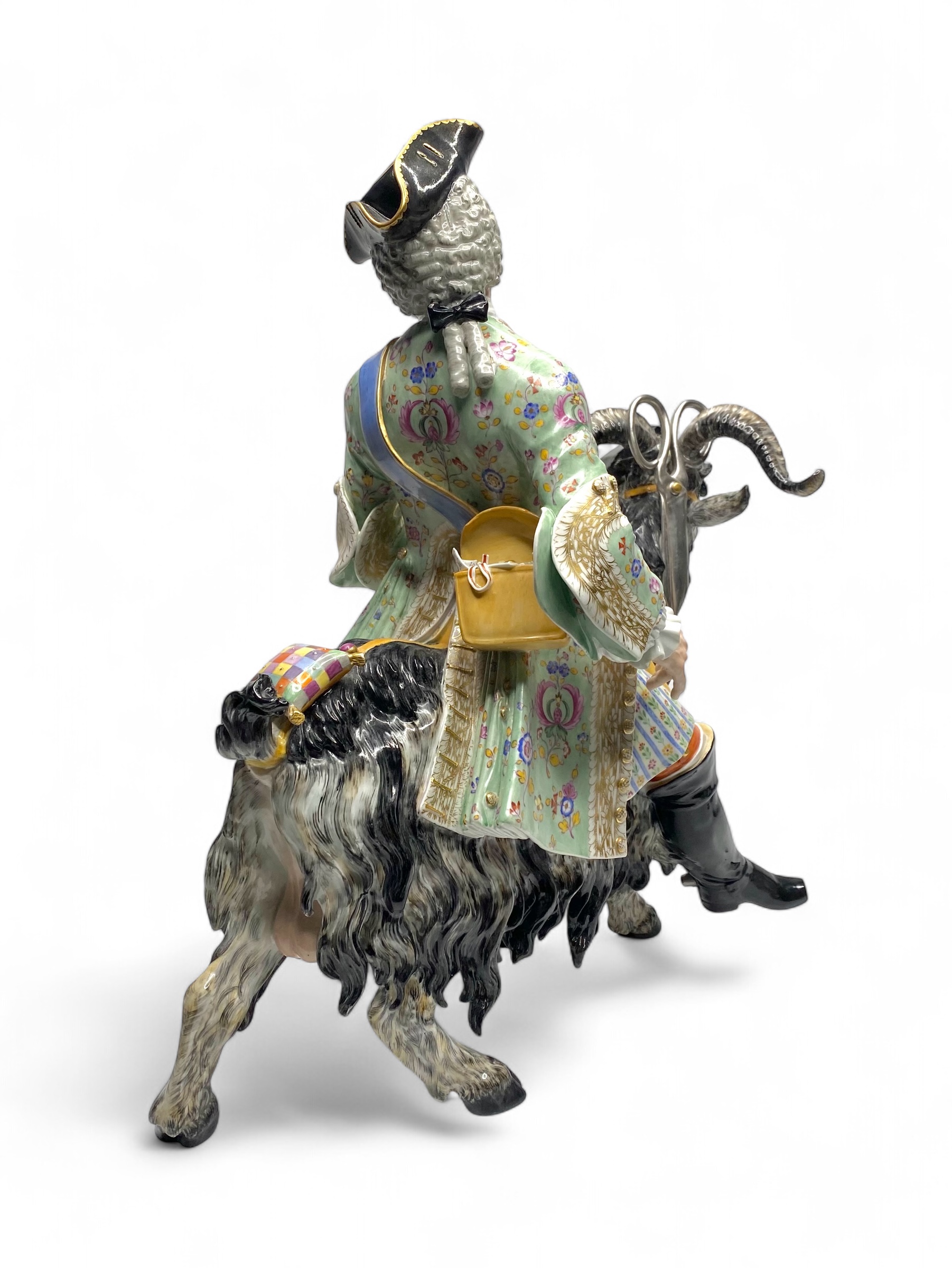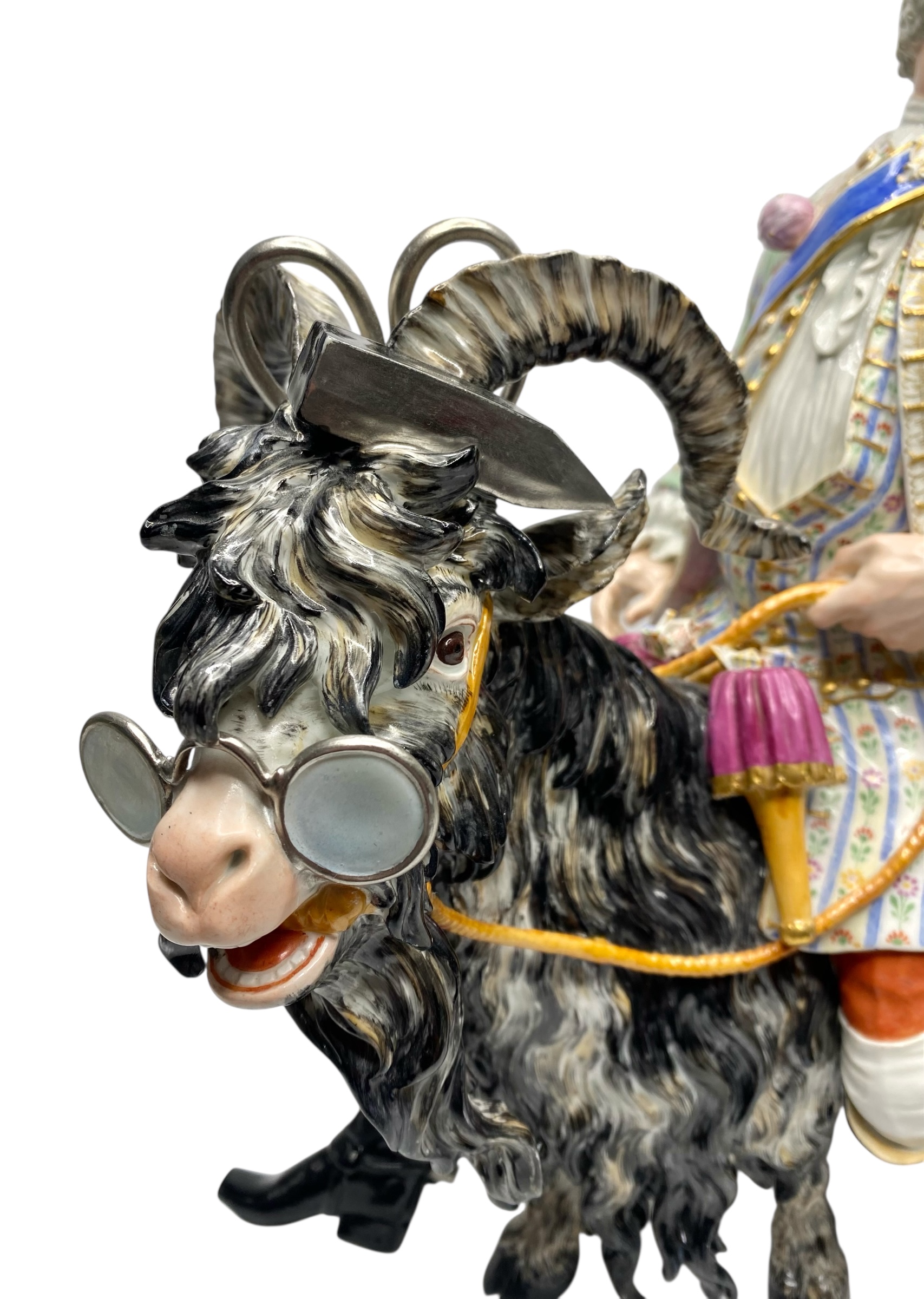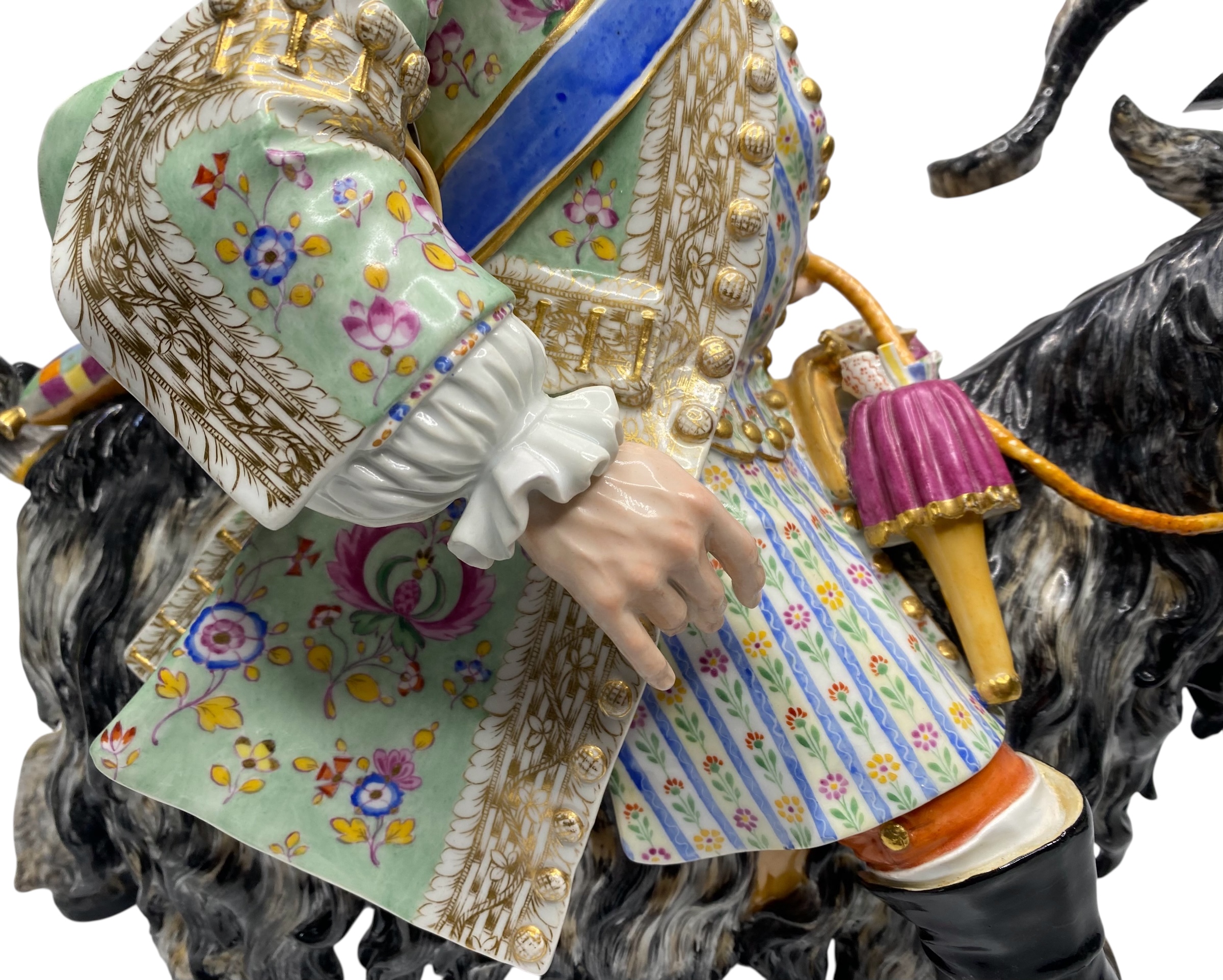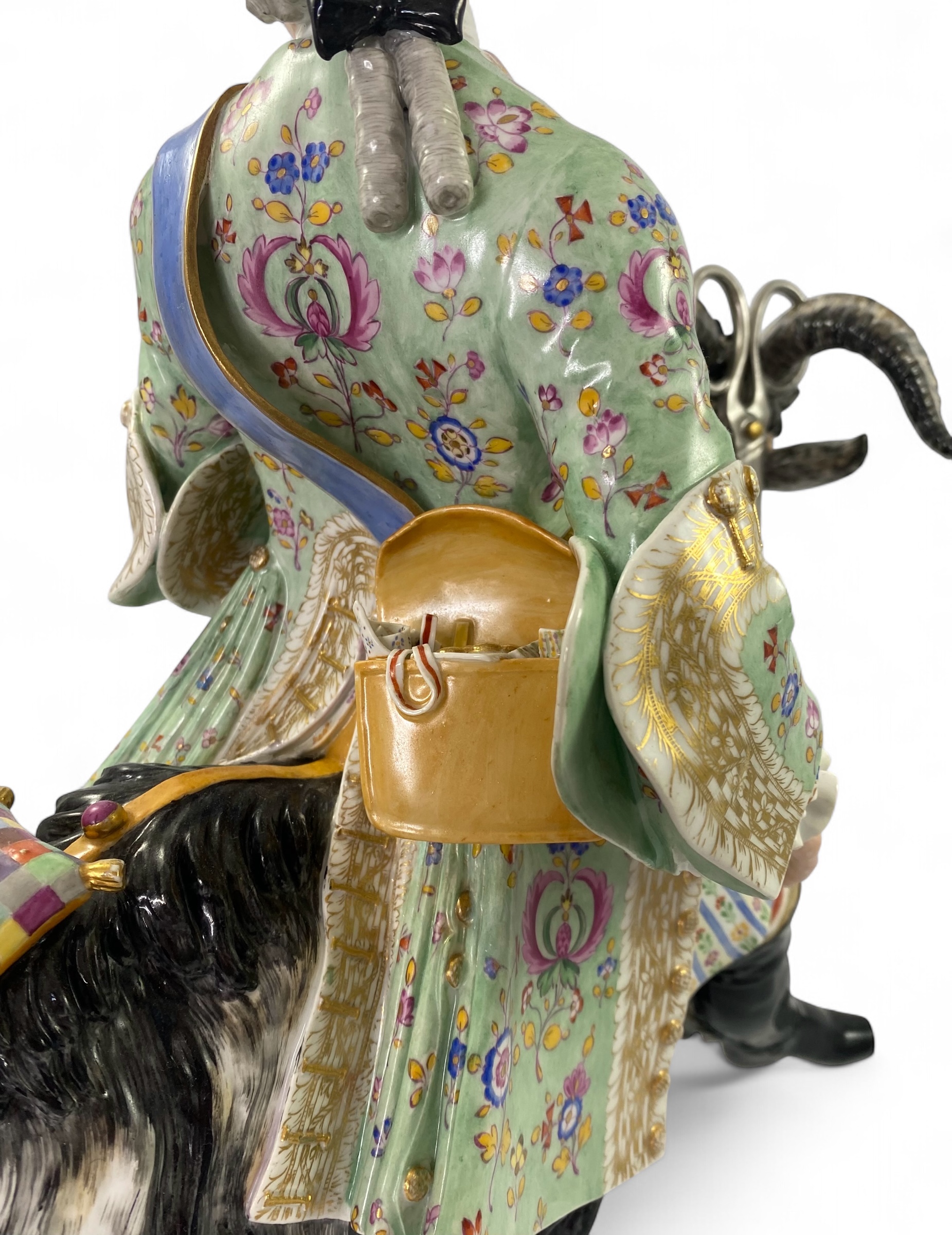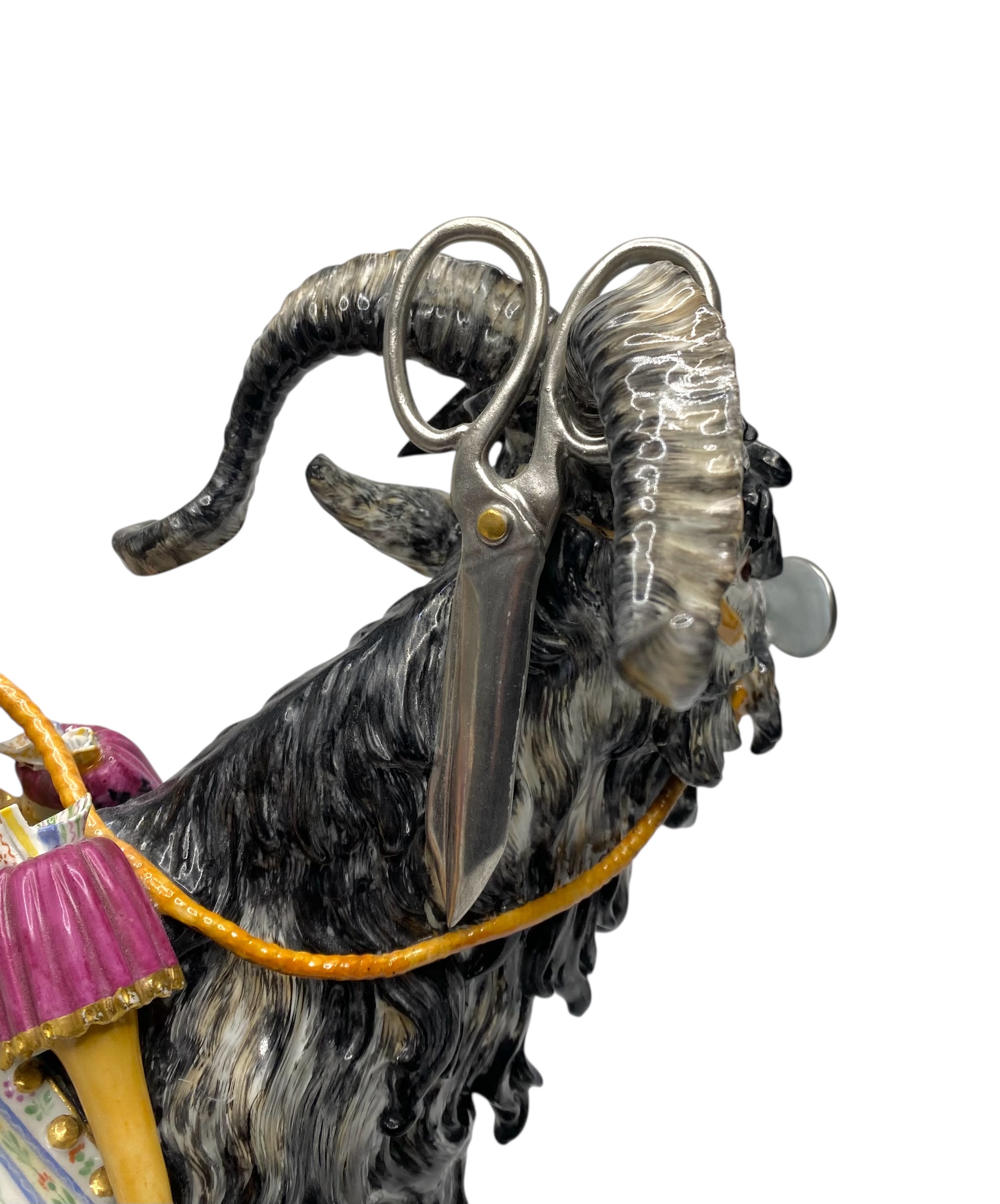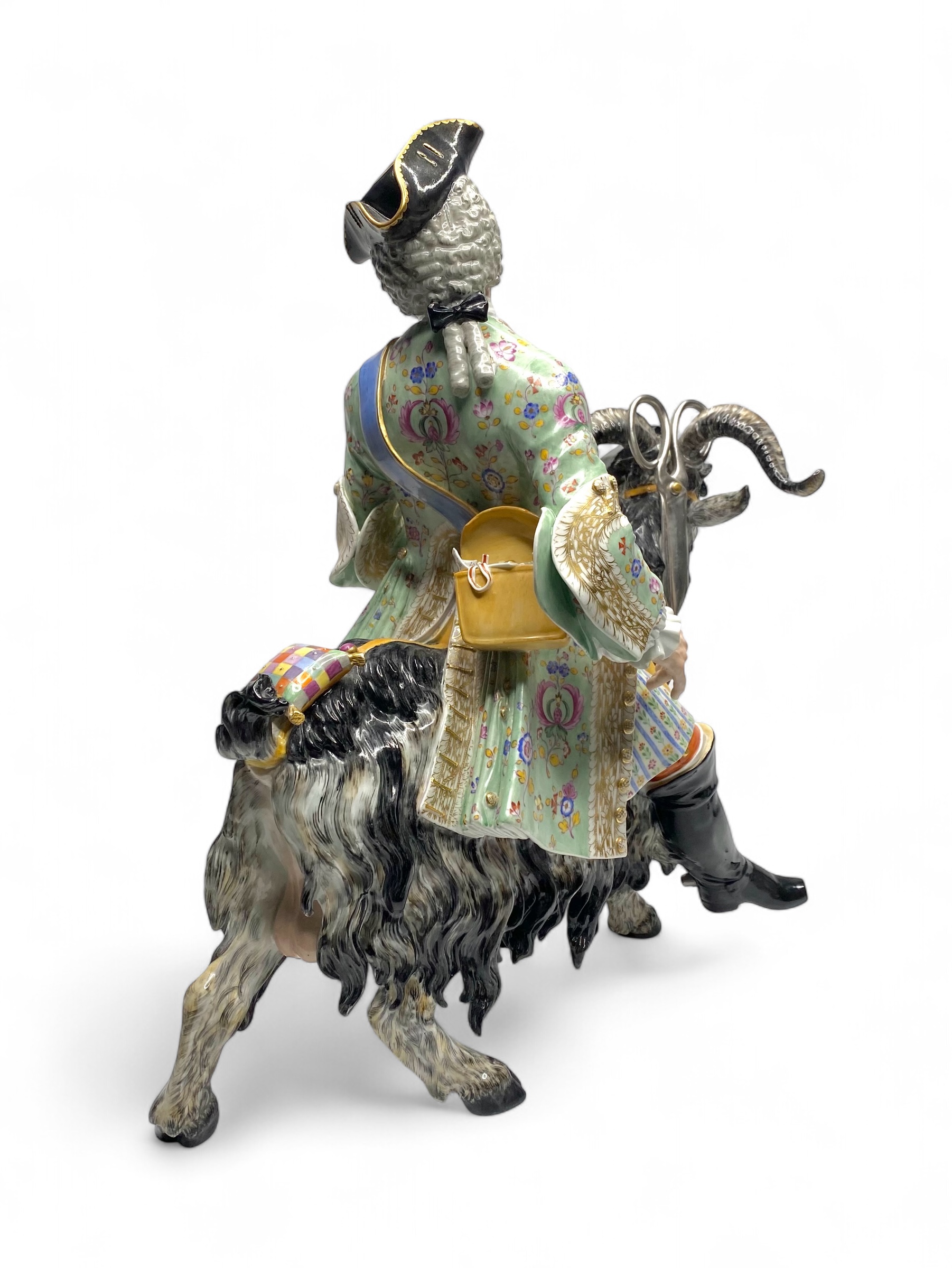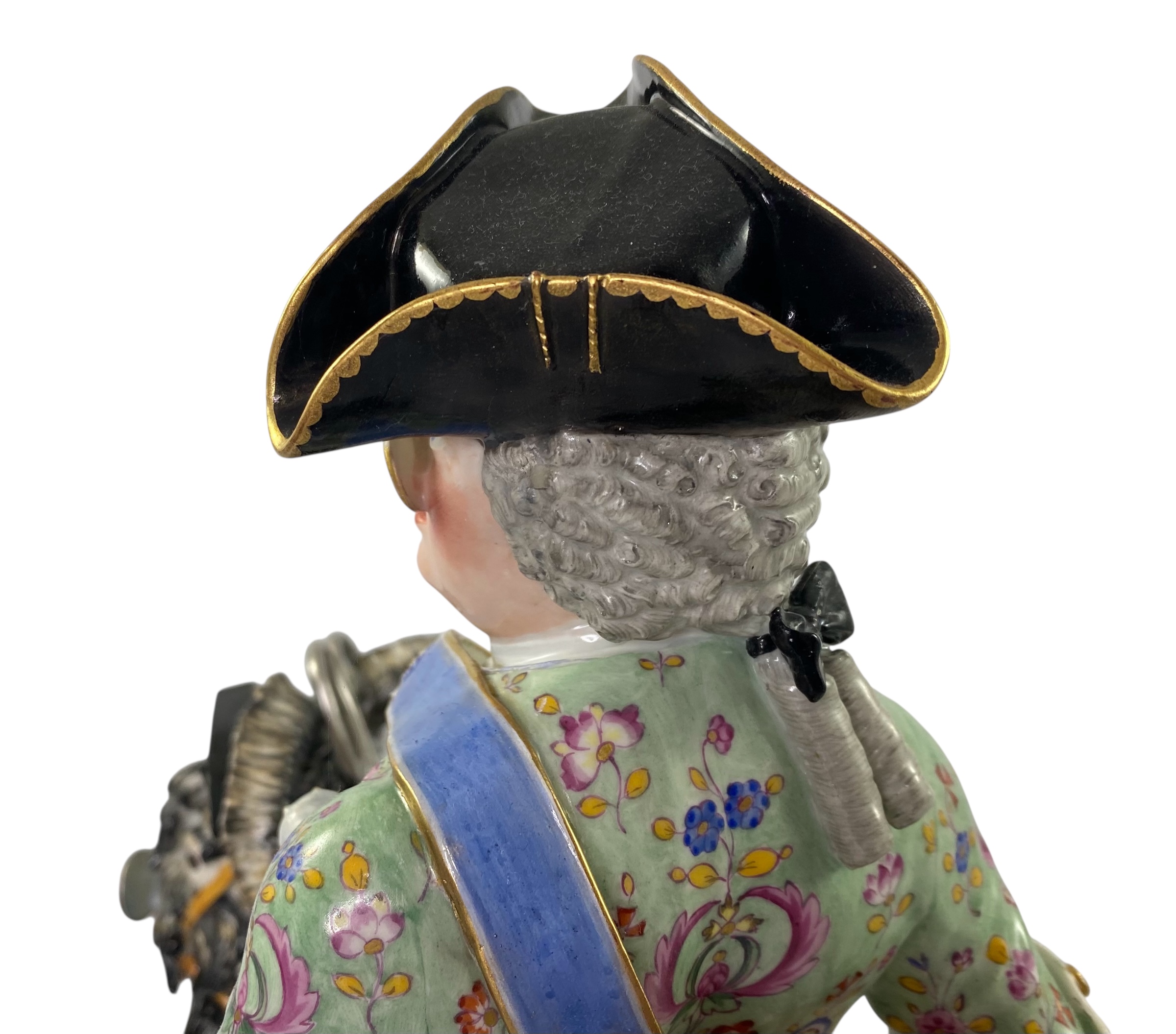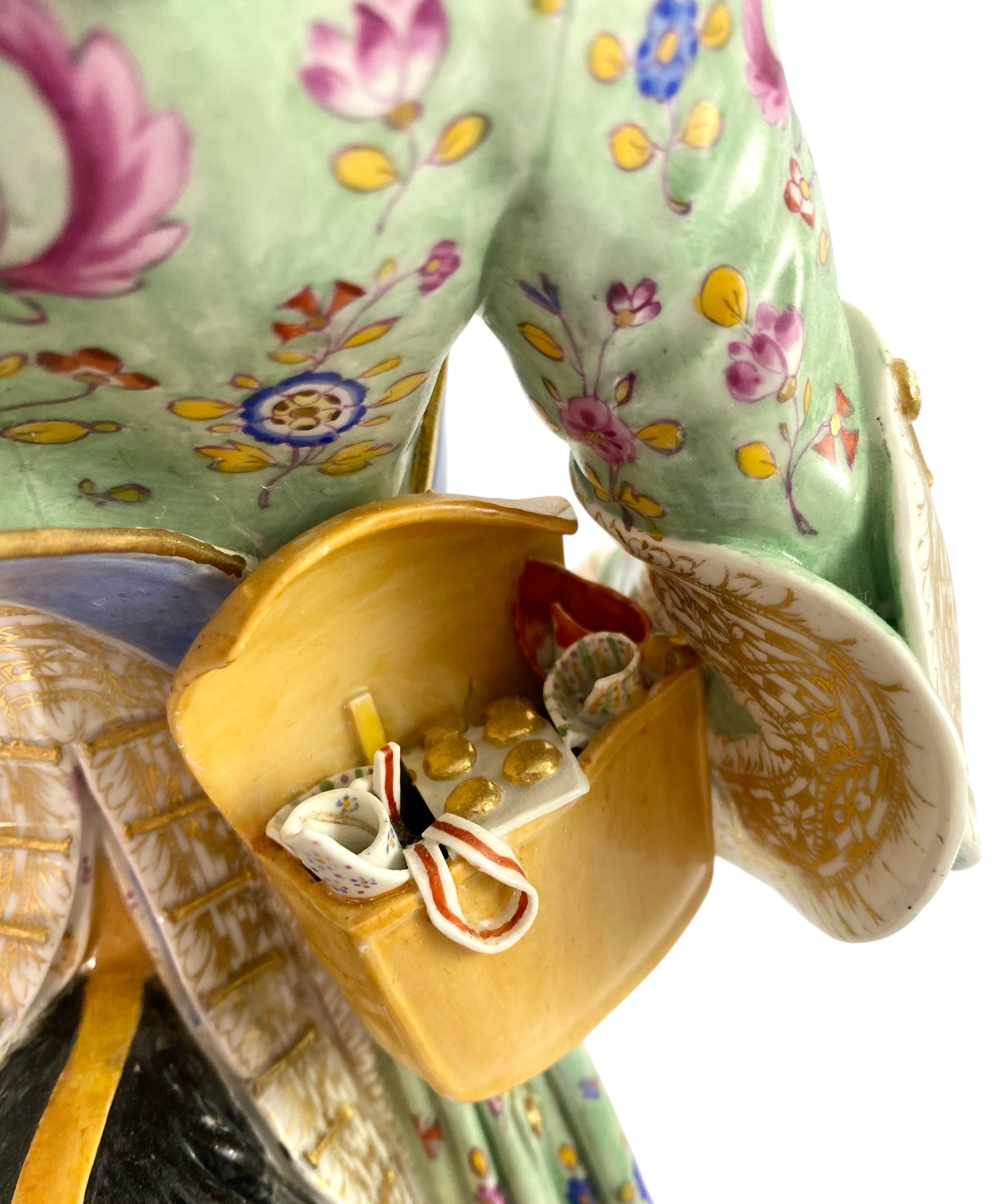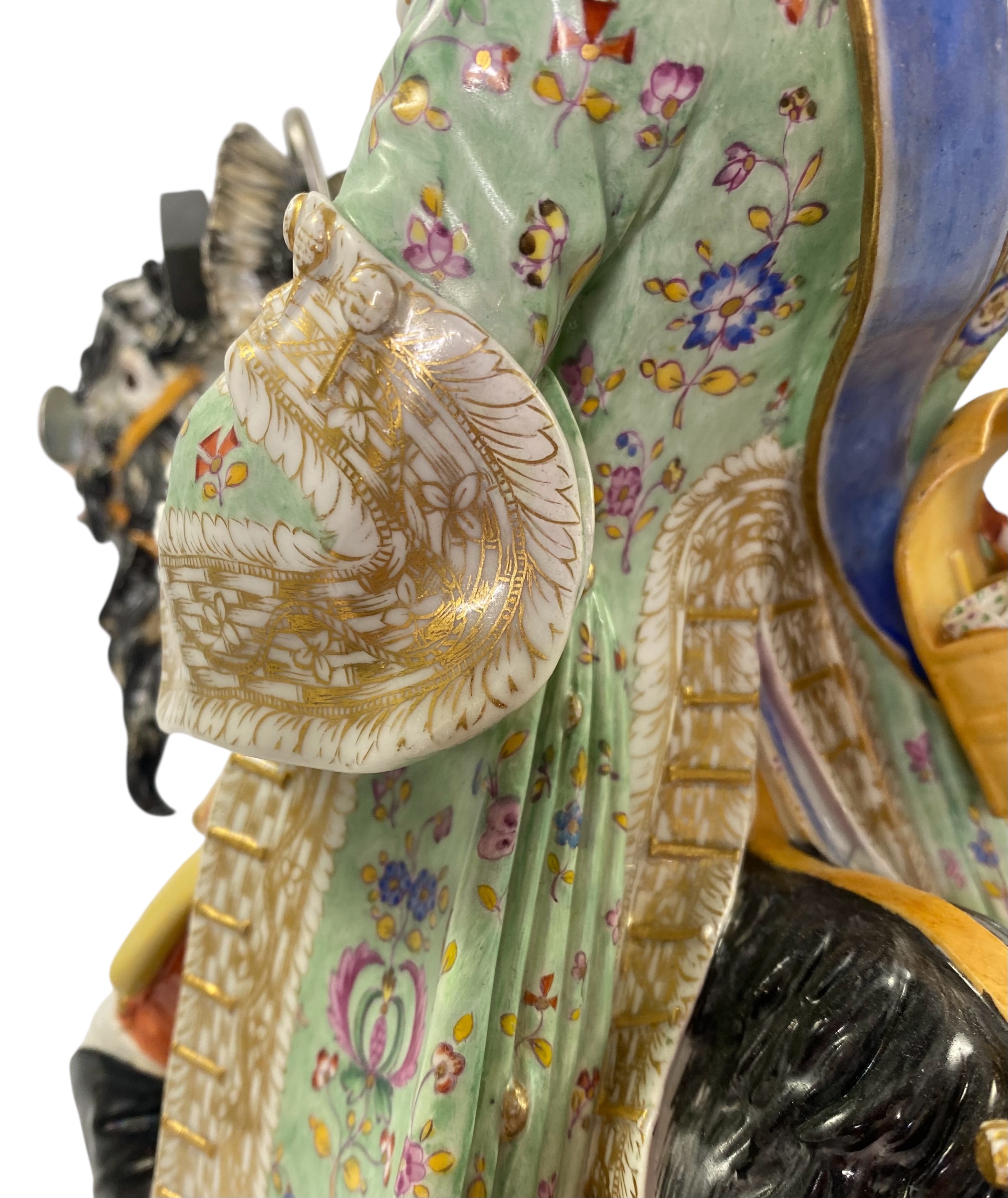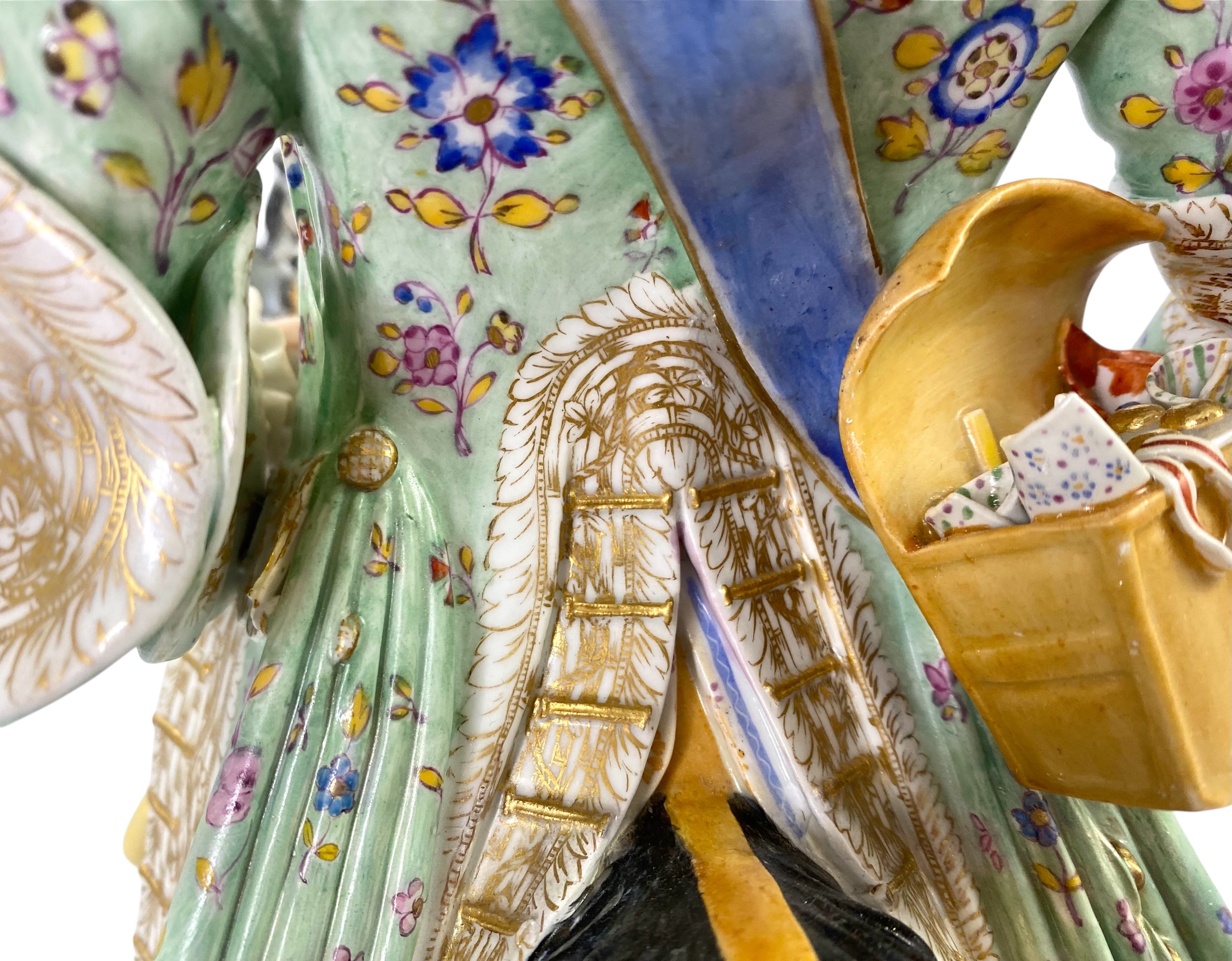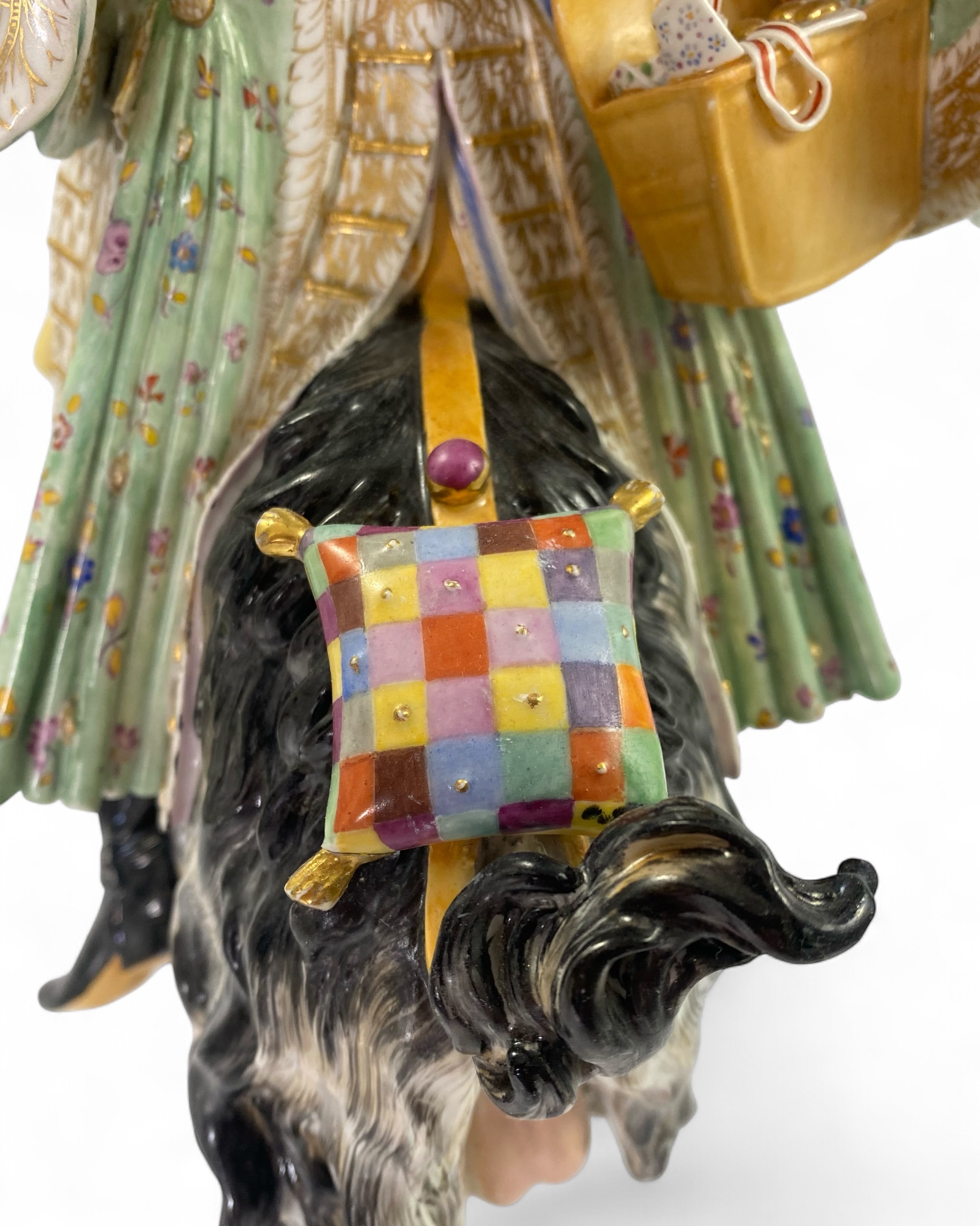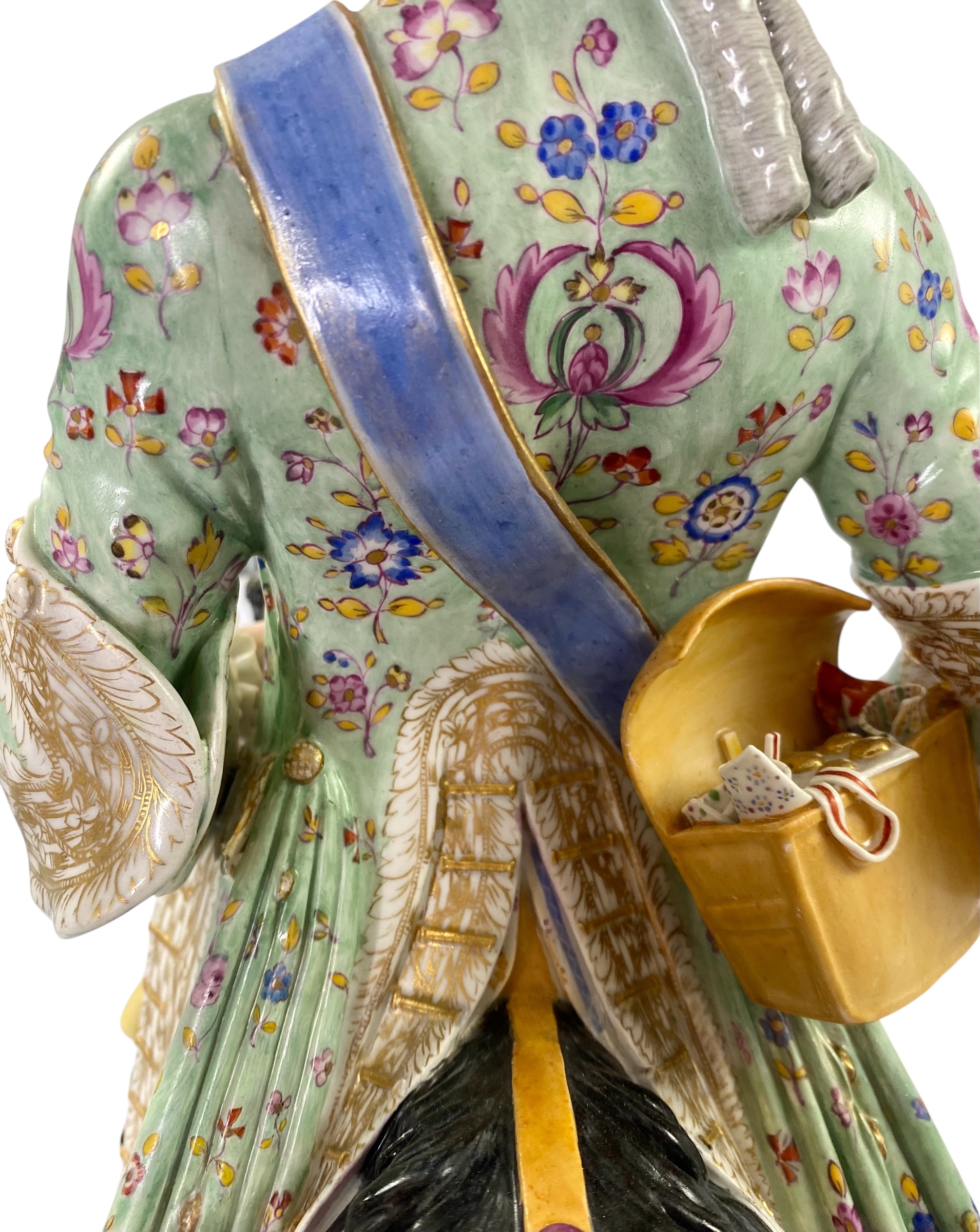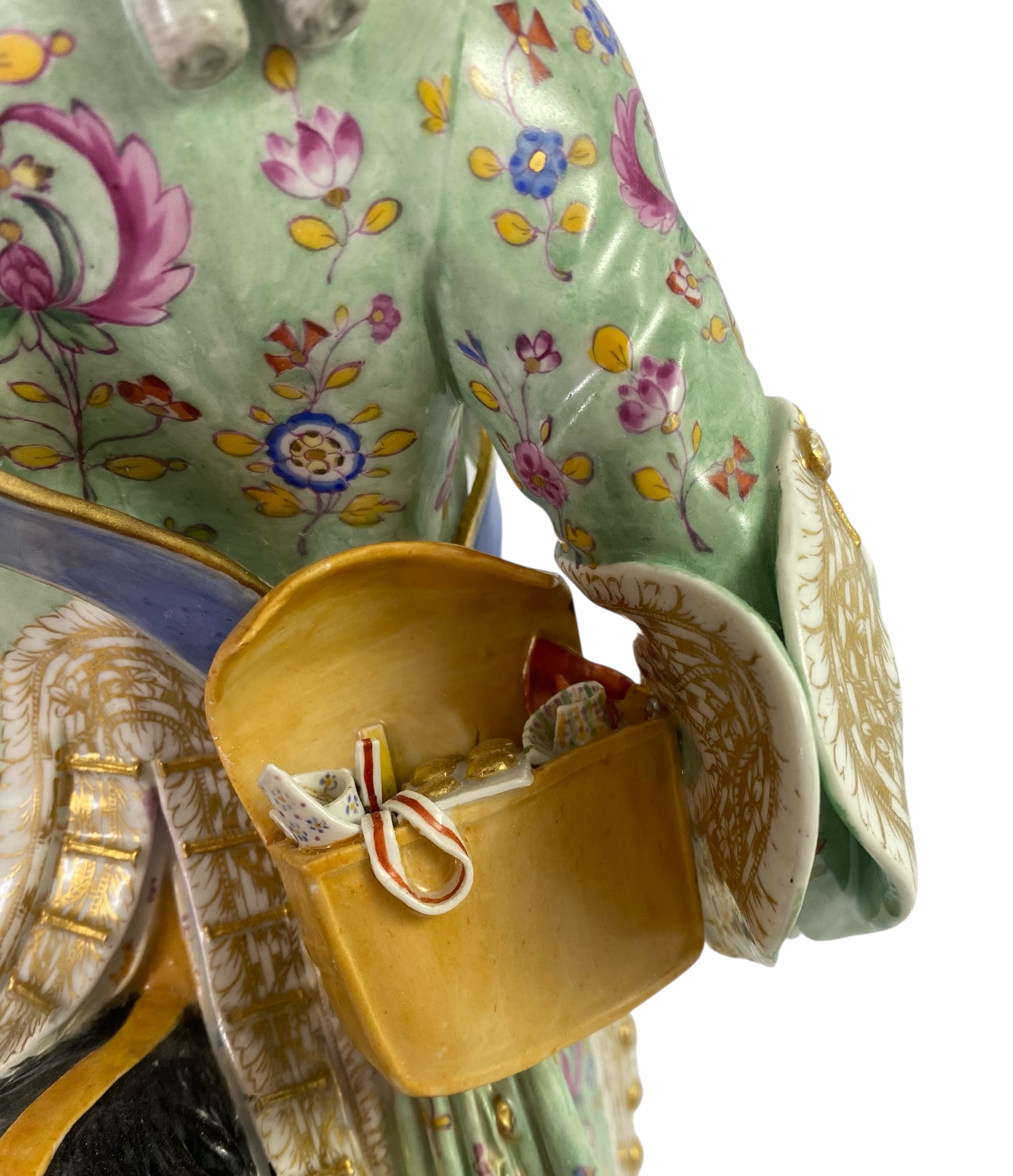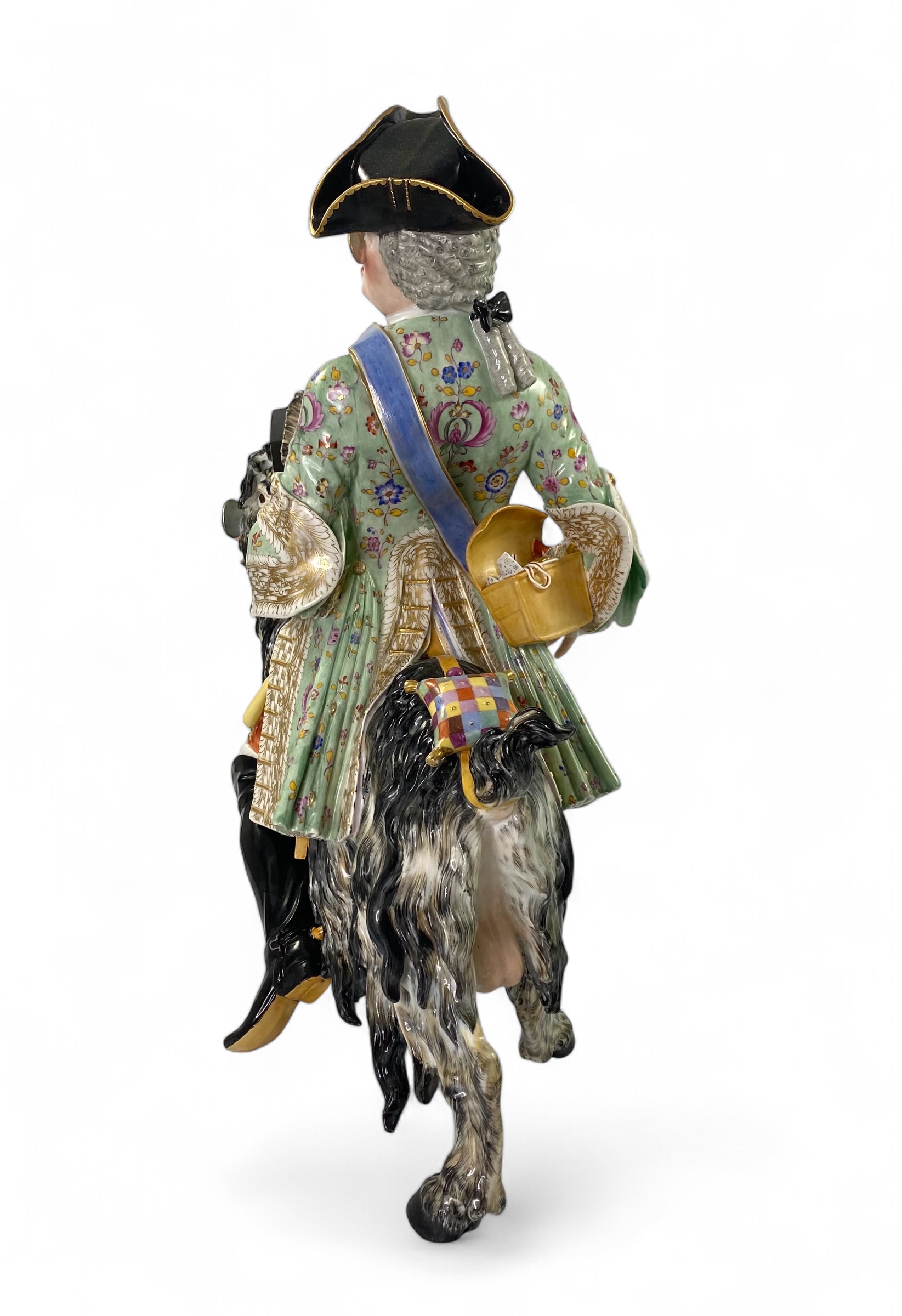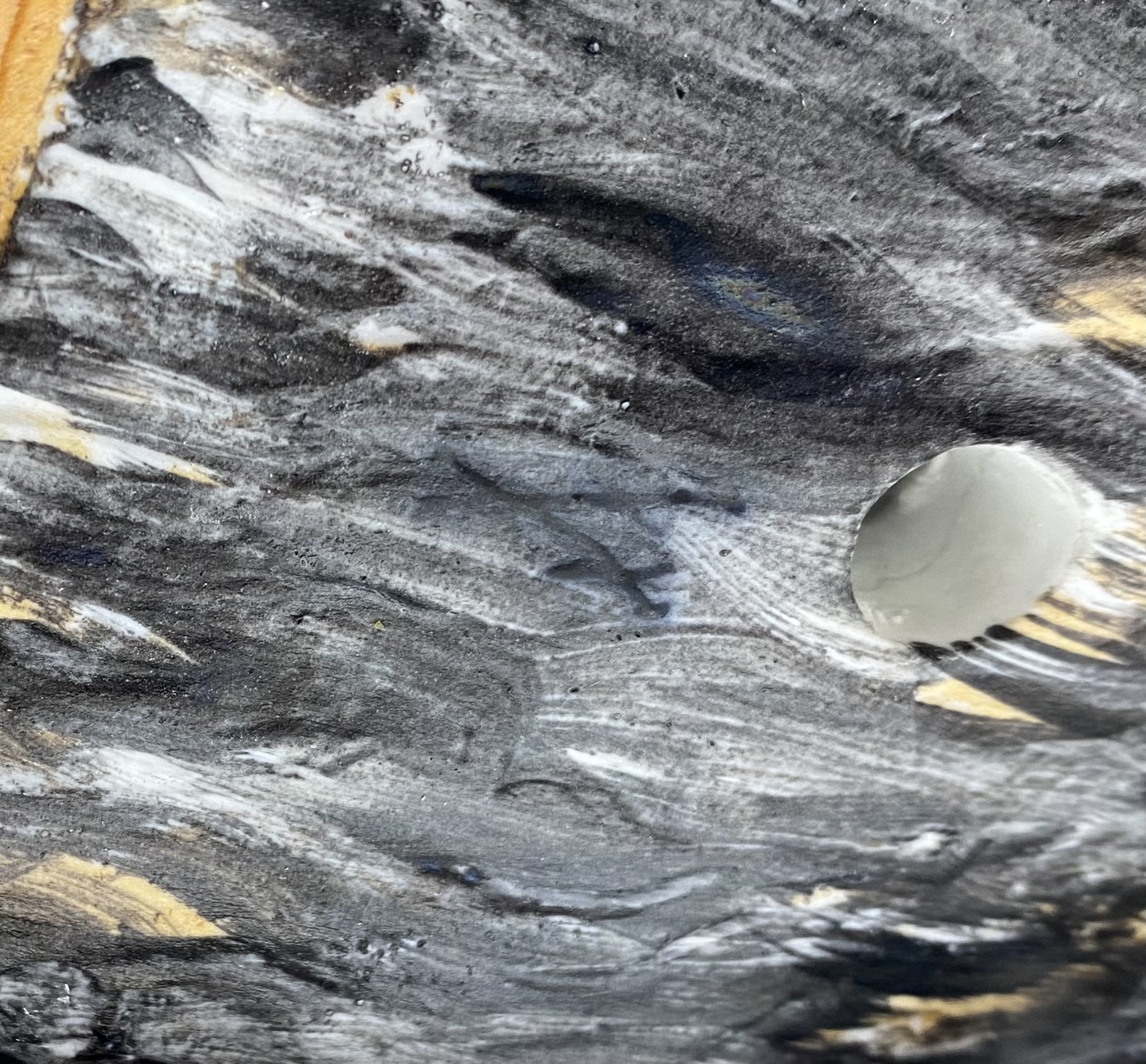Meissen porcelain Count Bruhls Tailor, c. 1860.
£14,500.00
An exceptionally fine Meissen porcelain figure group, Count Bruhls Tailor, c. 1860. Magnificently modelled after the original by J.J. Kaendler, as the tailor astride a goat. He wears 18th Century costume, whilst the tools of his trade are ingeniously placed around himself, and the goat – his tailors scissors and iron hanging from the goats horns.
His coat finely painted in Indianische Blumen, whilst the hems are intricately gilded.
Amusingly, both the tailor and his shaggy coated goat wear spectacles.
Underglaze blue crossed swords mark, and model number ‘107’ to the underside of the goat.
Height: 43.5 cm, 17 1/8”.
Width: 43.2 cm, 17”.
Depth: 24.5 cm, 9 5/8”.
Condition – Typical minor repairs to the extremities, commensurate with the age, and complex nature of this model.
Count Bruhl was renowned for his sartorial elegance, and his tailor increasingly considered that his role in the styling of the Count was not recognised. So much so, that he demanded a seat next to the King at court banquets. The Count realising that this could not happen, ‘compromised’ by commissioning Kaendler to create a figure of the tailor in porcelain, to be placed next to the King, at the table.
The group continued to be popular into the 19th Century, and an example was present at the Great Exhibition, London, 1851. In History and description of the Crystal palace, and the Exhibition of the world’s industry, (Band 1), 1851, p.153, John Tallis reports –
‘The grotesque figures and groups of Dresden porcelain have always been admired for their execution, if not for their style. The costumes are especially admirable, and the representation of fine work, such as lace, truly wonderful. Some specimens of this were seen in the Exhibition. One of the grotesque pieces which obtained most celebrity, and was familiar to all amateurs, was the famous tailor of the Count de Bruhl, a figure which was remarkable for the difficulty of its execution, owing to the numerous accessories it included. The figure of the tailor was represented riding on a goat surrounded with all the implements and appendages of his trade, and was about 20 inches in height’.

